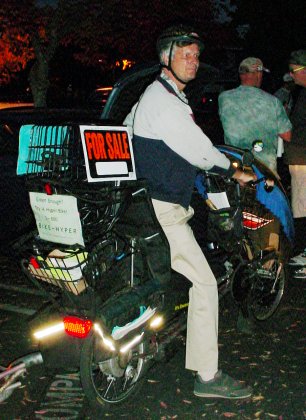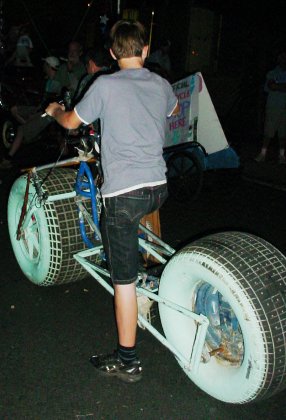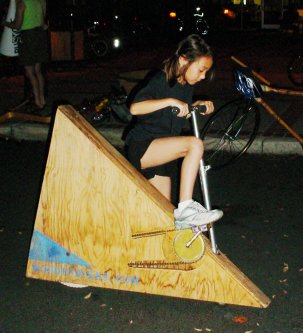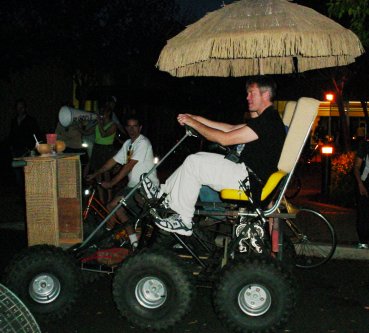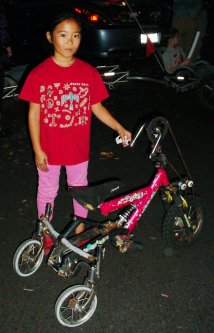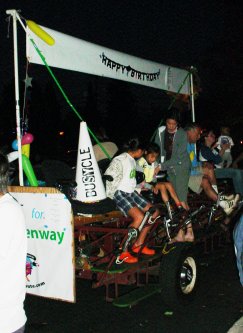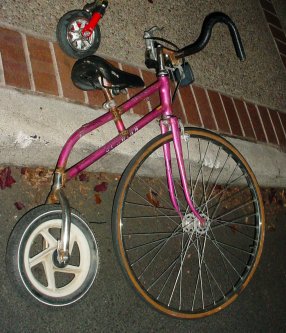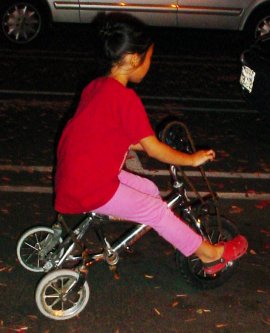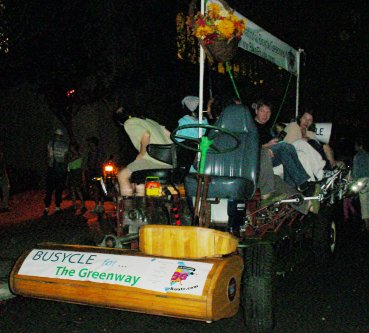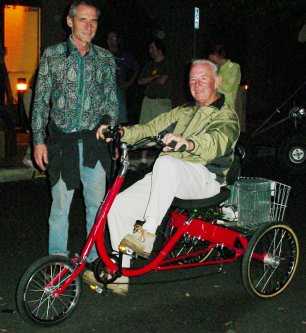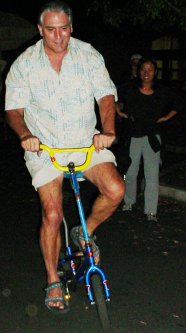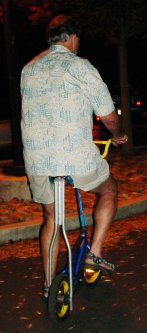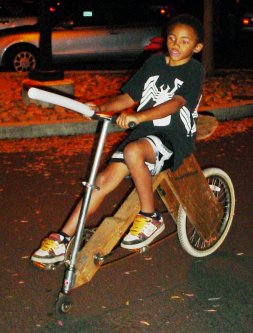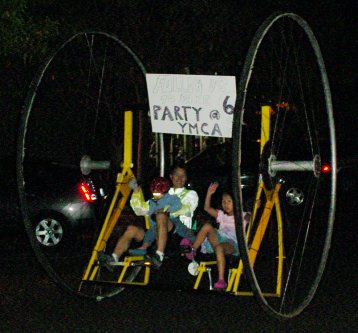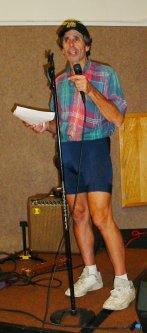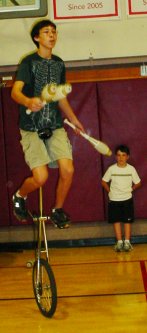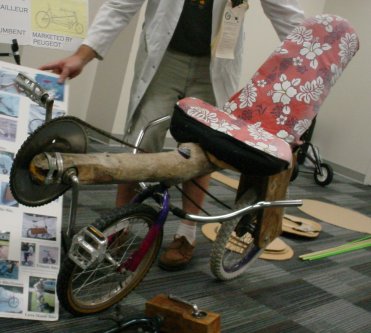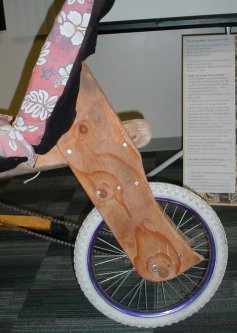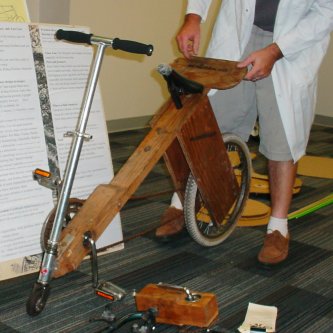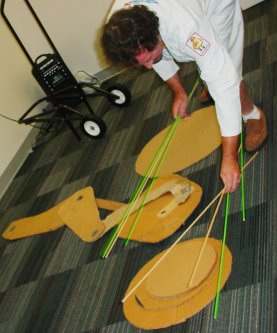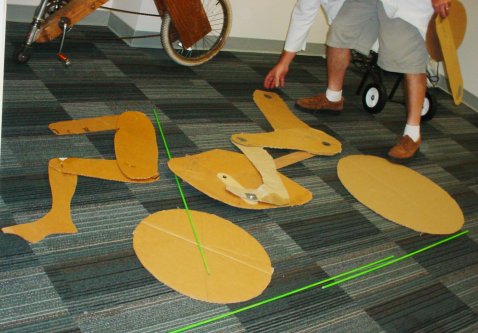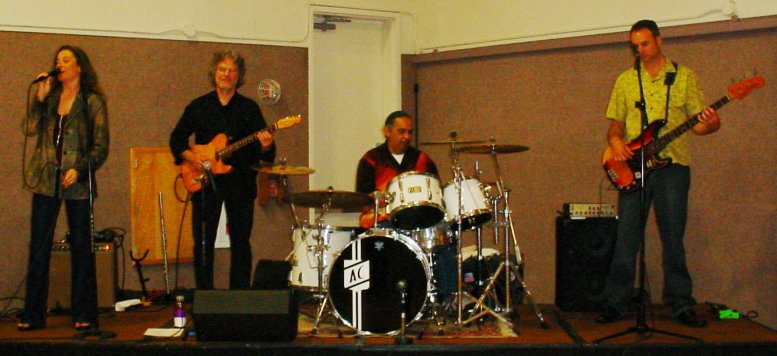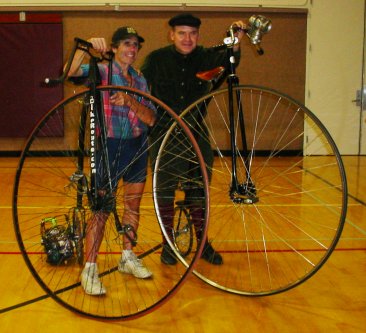When I got there the party was out in
the parking lot. There was a selection of unusual human powered
machines, and people were going from one to another trying them out. By
far the most practical of them was Mike's electric powered recumbent,
famous because it can go 25 miles at 25 MPH for a charge that costs
about 5 cents at the wall socket. The competition for most ridiculous
was tough, but this was a contender. Notice that the back wheel doesn't
spin around the center, but rather a point near the rim of the tire.
You could get it going by pushing with your foot, but after that
you had to rock back and forth in rhythm with the rotating tire to keep
it going. Getting the rhythm is a trick, and once you have that it's
quite an aerobic experience. Fun though.
I tried to ride most of the machines.
The plywood bike's big feature was that any sized rider could sit on it
"comfortably". It's hard to see in this picture, but the girl in pink
leggings is standing behind a machine that is powered by cranking the
handles. When riding it your feet just sit on the pegs.
It really was quite a lot of fun to
ride the machines!
Unlike most parties this one had two
tracks, the hang out in the gym and party track, and the listen to
presentations track. Aside from everything else I think a dozen
different interesting causes were tabling. One table had a guy selling
neat battery operated lighting products. Another was a guy pushing
mochi, a sweet brown rice based cooking ingredient I'd not been aware
of before. Another tabler was urging people to attend a bike swap at
the Cow Palace Nov. 29th & 30th. Hanging out in the gym, there was
a lot to do, but
for some reason the speaker track drew me in. The room for it was a
classroom that wasn't that full, and much more quiet than the zoo like
gym.
The first speaker was a bicyclist who likes to ride in the alps. He had
some stunningly beautiful pictures, but the room was dark and taking
pictures didn't seem to be appropriate. My most vivid memory of it was
a series of pictures of a winding road up a very steep mountain side.
Mont Blanc was in the background of some of them. The speaker said
"This is the best road to bicycle I have ever found on planet earth." I
gather he had biked more of it than most people.
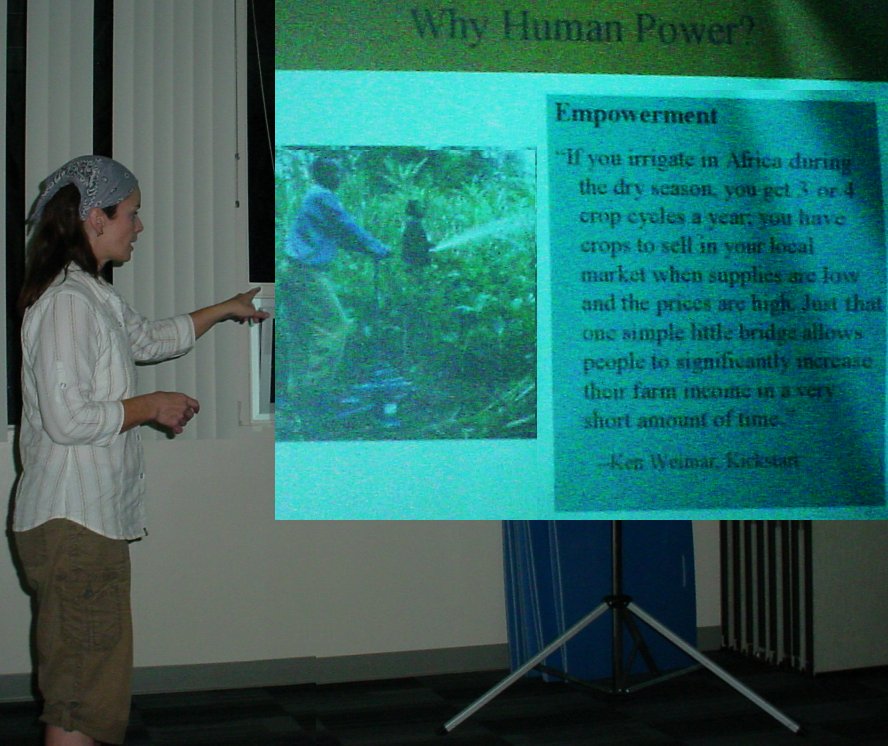
Tamara Dean was the next speaker. Her
book, The Human Powered Home, got her a speaker slot at the Green
Festival, and she had decided to add a detour to Palo Alto for this
event at the last minute. She had just come out from Wisconsin, where
she lives in the valley that is home base for Organic Valley, the
organic food distributor.
Tamara
had decided to power her home and everything in it herself, and the
lessons learned from that were the starting point for her book. She
explained that human
powered devices that are designed and built to do (whatever the task
is) make a lot of sense if the power requirements are within human
ability. Generally that is about 100 Watts if the duration of the
exertion is less than about ten minutes, or more like 25 Watts for
longer periods. People can augment the power they deliver over time by
getting in shape. Pumping water, shelling nuts, powering small radios
and LED
based lights, spinning potters wheels, push mowers, and many other
kitchen and shop devices are practical and common. The talk was so eye
opening that
I got the book.
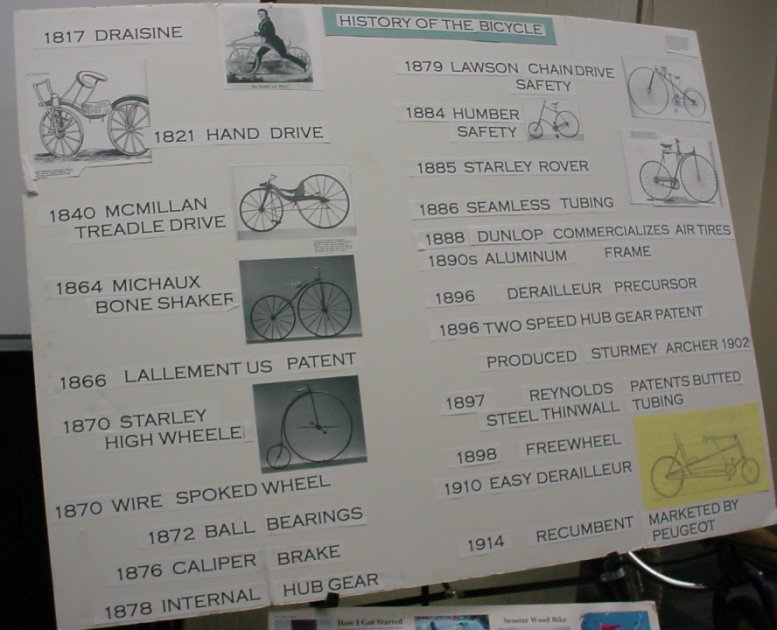
The next speaker was a local bike
activist. Because his passion is sustainable technology, his
presentation was all based in paper and things, none of which required
electricity. He started by briefly
reminding us of the history of the bicycle. Most of the key innovations
that made the modern bicycle possible happened in the 1800s, the same
time frame when the basic innovations Tamara was talking about were
developed. The
changes since then have been refinements compared to the early changes,
when in just a century two wheeled human powered transportation went
from "fad toy" to "practical
transportation".
The way the guy talked made wooden
bicycles a very exciting idea. Wood is a very easy material to work
with, and you can make bikes of almost any configuration out of it. He
had made bikes from driftwood, plywood, and other cheap materials.
Usually he gets the moving parts from a cast off normal bike. There are
plenty of those around.
When designing a new bike, the guy
always starts with Cardboard Aided Design (CAD). He makes cardboard
cutouts the right size to represent himself, the wheels he has to work
with, and other fixed components. Then he arranges them, looking for
answers to questions like "where does the chain go?" (for maximum
efficiency the torque bearing chain should go in a straight line from
the crank to the drive wheel), and "can I reach
the handlebars comfortably?" (The steering rake should be such that the
tire patch for the front wheel is an inch and a half or so behind a
line drawn down the center of the shaft from the handlebars to the
fork. Otherwise the steering feels weird.) He has learned from
experience to build it only after he sees good answers to these. The
guy liked making different bikes. There are already enough normal
bikes, so why try to compete with those?
Meanwhile, in the gym there was a party
going on. I missed most of it, but I'm sure the people there had a
great time.
